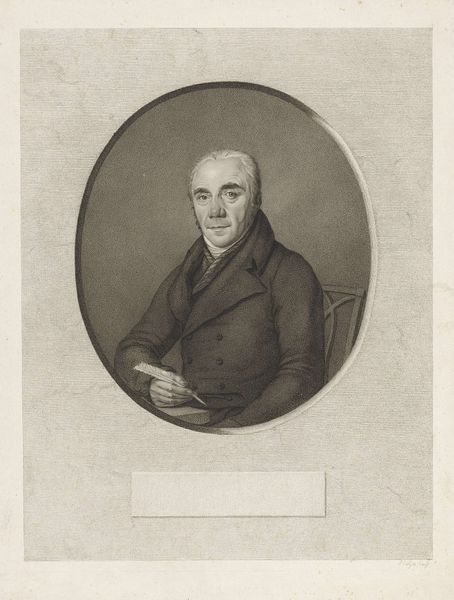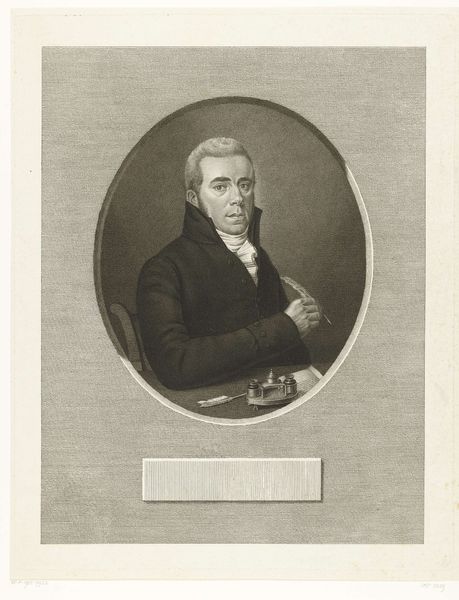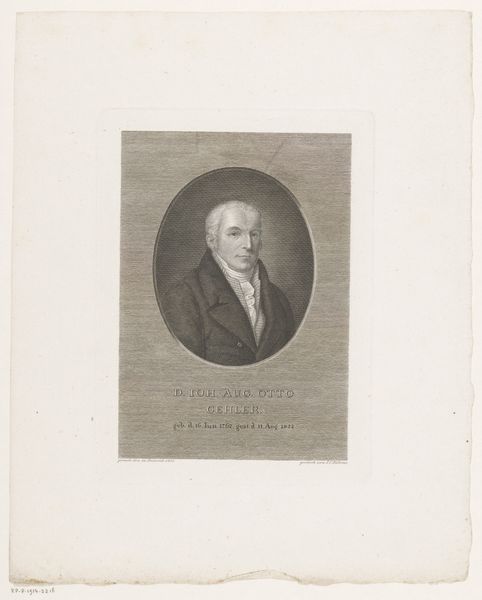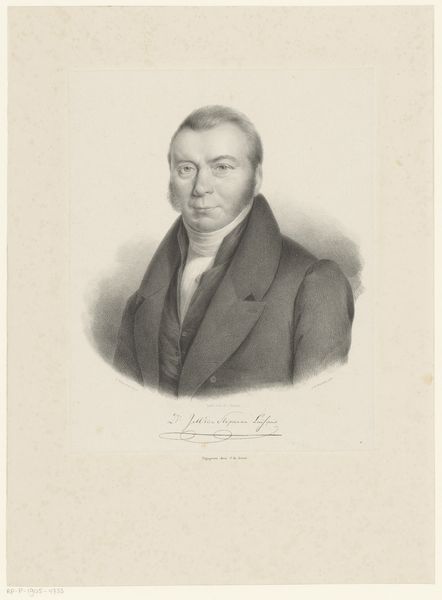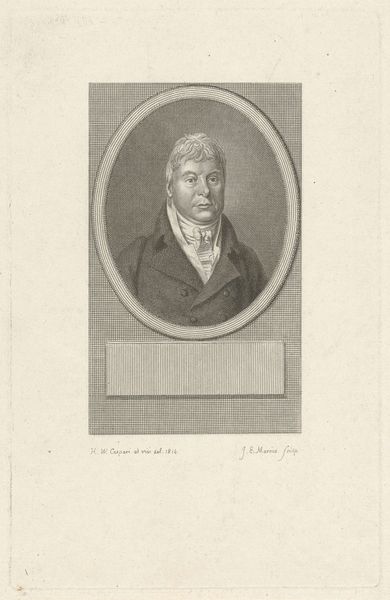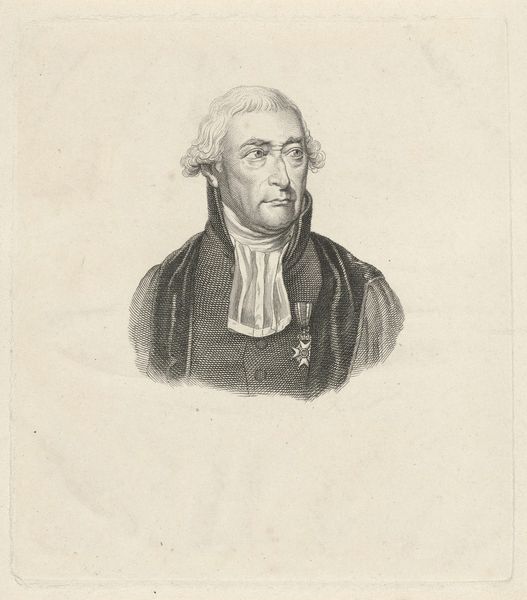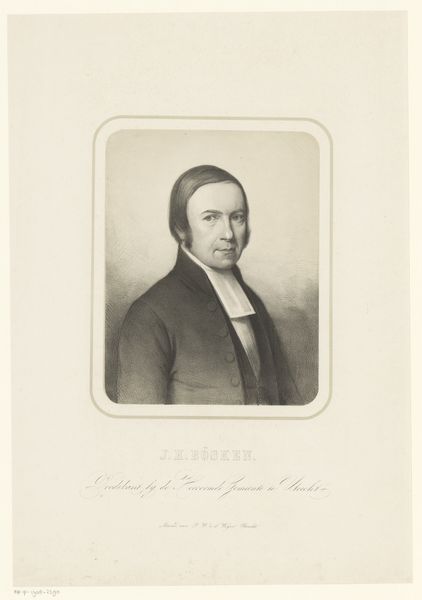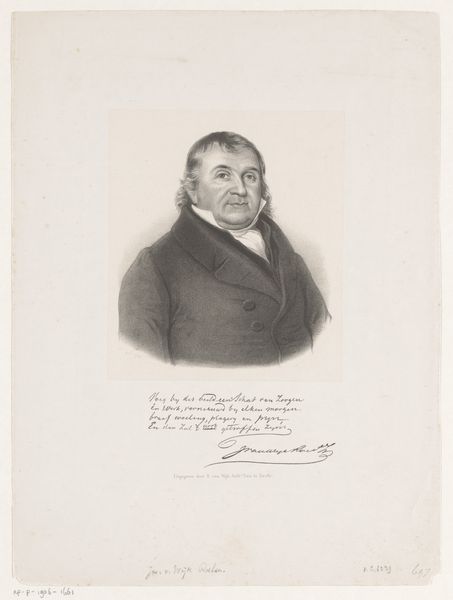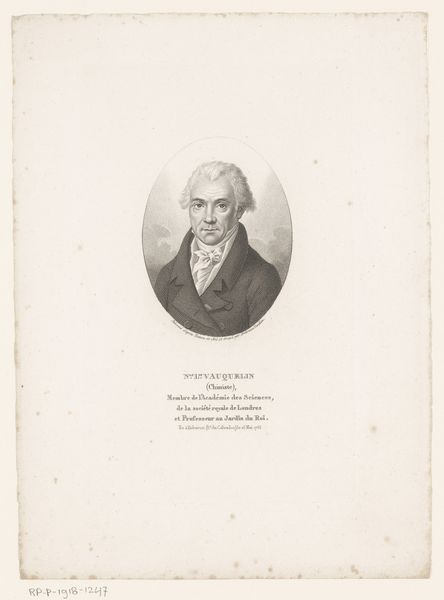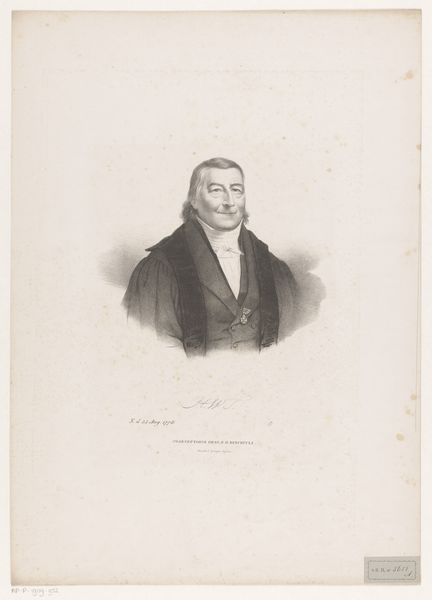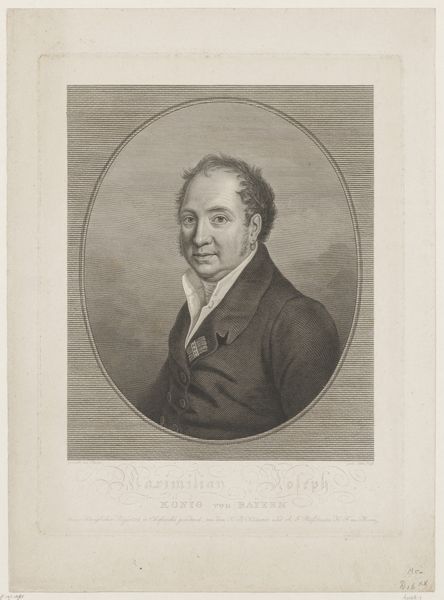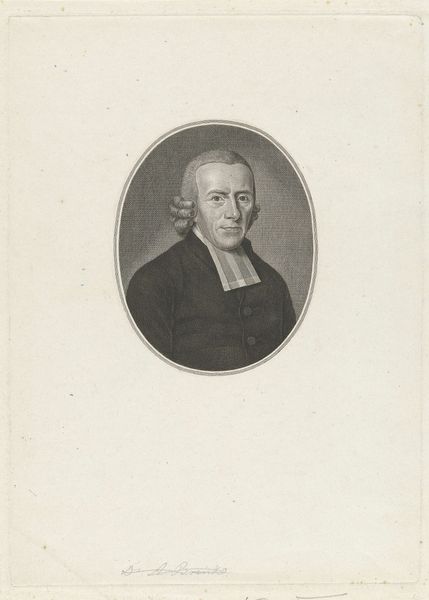
drawing, print, pencil, engraving
#
portrait
#
pencil drawn
#
drawing
#
neoclacissism
#
light pencil work
# print
#
pencil sketch
#
form
#
pencil drawing
#
pencil
#
line
#
engraving
#
realism
Dimensions: height 235 mm, width 145 mm
Copyright: Rijks Museum: Open Domain
Editor: This is "Portrait of Diederich Hermann Biederstedt" made sometime between 1787 and 1824 by Meno Haas. It’s a print – pencil and engraving, I think? The subject’s face seems very stern, almost confrontational, despite the softness of the medium. What do you see in this piece? Curator: Beyond the representational likeness, I see a reflection of societal power structures embedded within the visual language of the Neoclassical era. Think about it – who had their portraits commissioned? What message did they want to convey? Editor: Probably someone important. Respectability, seriousness? Curator: Precisely. The very act of commissioning and creating a portrait was a demonstration of social standing, often linked to political influence and economic capital. This portrait operates within a system of visual representation that perpetuates power dynamics. Look at the level gaze. What does it evoke for you? Editor: Authority? But also, because it’s a drawing, not an oil painting, there's something a bit more intimate about it. Almost like a study? Does that undermine his authority somehow? Curator: That's a great observation. The choice of medium could suggest a tension, perhaps a deliberate attempt to balance the desire for elevated status with a sense of approachability, aligning with shifts in social consciousness even within the elite. It is these negotiations of power that fascinate me most about this piece. How might ideas around masculinity play into our understanding of it? Editor: Wow, I hadn’t thought about it that way at all! So, reading this portrait means understanding the context of class, power, and gender roles of the time. Thanks! Curator: Exactly! By deconstructing these visual cues, we can uncover so much more than just a simple depiction of a man.
Comments
No comments
Be the first to comment and join the conversation on the ultimate creative platform.
